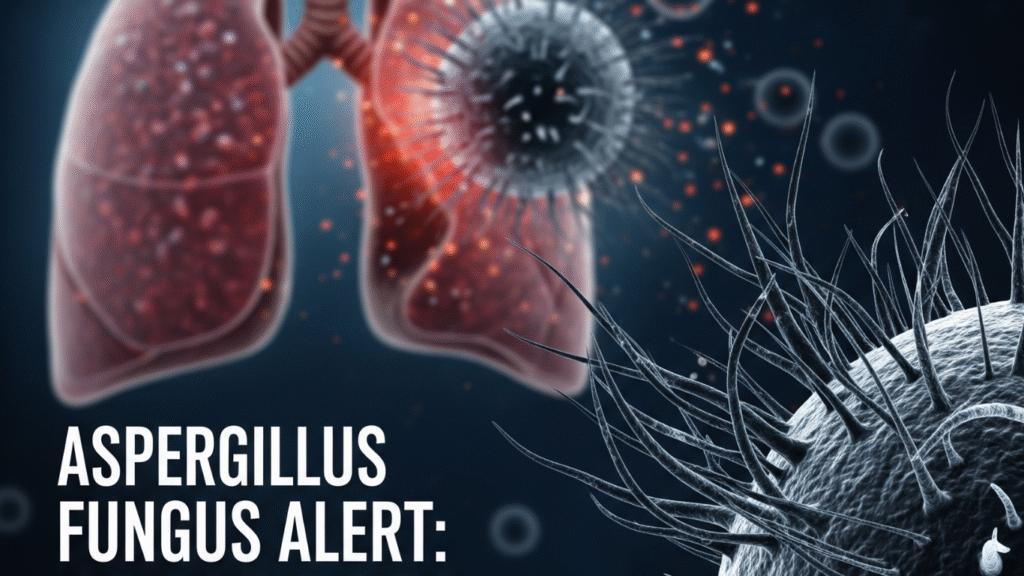
When we think of deadly health threats, fungi rarely come to mind. But one microscopic organism is gaining serious attention — the Aspergillus fungus — and you might be breathing it in right now without even knowing.
This common mold, found in everything from soil to household dust, is harmless for most people. But under the right conditions, it can cause life-threatening infections by eating away at the body from the inside out — particularly in those with weakened immune systems.
What Is the Aspergillus Fungus and Why Is It So Dangerous?
The Aspergillus fungus includes more than 180 species, but one — Aspergillus fumigatus — is especially dangerous to humans. While most people inhale its spores daily without issue, individuals with compromised immune systems can develop a deadly condition known as invasive aspergillosis.
In these cases, the Aspergillus fungus takes root in the lungs and rapidly spreads to other organs, breaking down tissue and triggering organ failure.
How the Aspergillus Fungus Attacks the Body
Once inhaled, the spores of the Aspergillus fungus can multiply and invade the body’s tissues. It starts in the lungs and may travel to the brain, heart, kidneys, and even the skin. Think of it like a fungal invasion spreading through the body, disrupting vital systems and feeding off weakened tissue.
Common symptoms include:
- Persistent fever
- Chest pain
- Coughing (possibly with blood)
- Breathing difficulties
- Confusion or neurological issues (if it reaches the brain)
Without quick diagnosis and treatment, invasive aspergillosis can be fatal within days.
The New Threat: Drug-Resistant Aspergillus Fungus
One of the most alarming developments is that the Aspergillus fungus is becoming resistant to antifungal drugs, especially azoles — a common class of medication.
The main reason? Widespread use of fungicides in agriculture, which mimics the effect of medical antifungals. This allows resistant strains to evolve in the environment and make their way into hospitals, where they are much harder to treat.
Drug-resistant Aspergillus infections are rising, especially in ICU settings and among COVID-19 survivors.
Can the Aspergillus Fungus Spark a Health Crisis?
Although the Aspergillus fungus doesn’t spread from person to person like a virus, experts still warn it could cause pandemic-like pressure on global healthcare systems.
Why?
- It’s infecting vulnerable ICU patients.
- Drug-resistant strains are on the rise.
- It’s linked to increased hospital deaths.
- Climate change and pollution are making exposure more common.
The World Health Organization (WHO) has named Aspergillus fumigatus a top-priority fungal threat — a clear sign that global health leaders are paying attention.
Who’s Most at Risk of Aspergillus Fungus Infection?
While healthy people are generally safe, the Aspergillus fungus poses serious danger to:
- Cancer patients undergoing chemotherapy
- Organ or stem cell transplant recipients
- Individuals with chronic lung diseases (COPD, asthma)
- ICU patients (especially on ventilators)
- Immunocompromised individuals (e.g., HIV/AIDS)
Even something as routine as hospital renovations can release fungal spores into the air, creating hidden risks for vulnerable patients.
How Can We Protect Ourselves from Aspergillus Fungus?
To fight back against the Aspergillus fungus, public health experts recommend:
- Better diagnostics – early detection saves lives.
- New antifungal treatments – especially for resistant strains.
- Responsible use of fungicides – in both medicine and agriculture.
- Public awareness – people need to understand fungal threats.
Fungal infections are often overshadowed by viruses and bacteria — but the Aspergillus fungus proves that ignoring them could be a fatal mistake.
Final Thoughts: Don’t Underestimate the Aspergillus Fungus
It may be invisible and silent, but the Aspergillus is not harmless. For the vulnerable, it can be deadly. With rising drug resistance, climate-related risks, and growing ICU cases, it’s time to take fungal infections seriously.
While it won’t cause a traditional pandemic, the Aspergillus could still be one of the most dangerous health threats of our time — and it’s already in the air we breathe.
More Blogs That You Should Read
- Top 6 Incredible Health Advantages of Apple Cider Vinegar
- Is Alcohol and Milk Safe to Drink Together?
- Struggling with Acne? – Try These 20 Proven Ways to Get Clear Skin Now!
- Managing High Blood Pressure Lowers Dementia Risk


